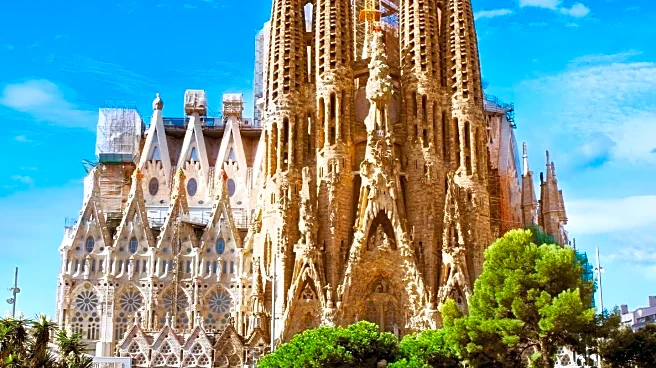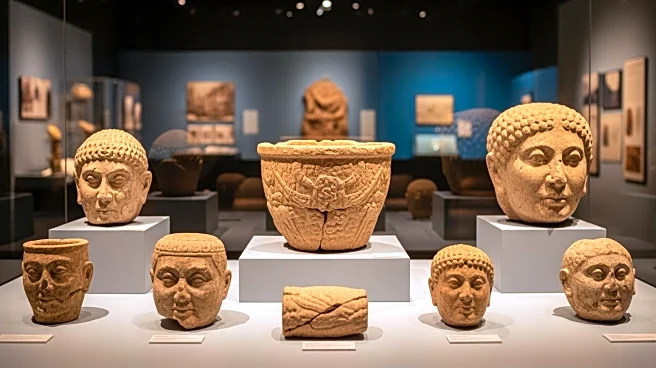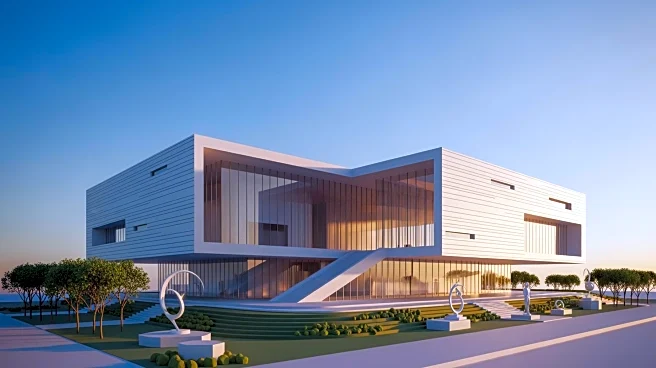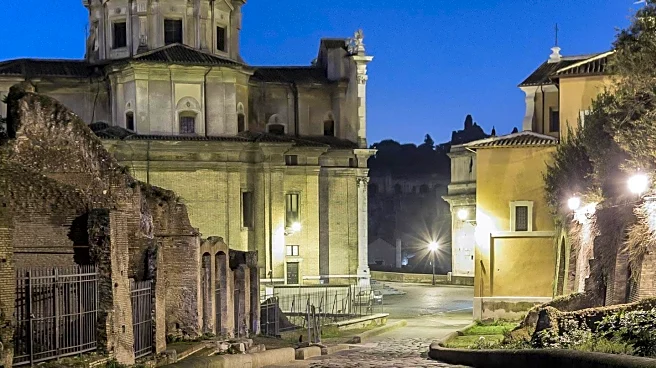What's Happening?
A study has been conducted on the Cell-Chain-Form (CCF) framework, which aims to restore traditional architectural windows and doors by analyzing their genetic structure. The framework identifies basic
components such as door leaves and window lattices, which are assembled using specific topological connection rules. These components, referred to as 'gene cells,' carry cultural semantics and are combined through 'chains' to form recognizable configurations. The study focuses on Zhangguying Village in Yueyang City, Hunan Province, known for its well-preserved ancient Han residential architecture. The research involves data collection, vectorization, and the creation of a graphic database to guide restoration efforts.
Why It's Important?
The CCF framework is significant as it provides a systematic approach to preserving cultural heritage through architectural restoration. By decoding the genetic structure of traditional doors and windows, the framework helps maintain cultural identity and historical aesthetics. This research is crucial for heritage conservation, offering a replicable method for restoring damaged architectural elements. It ensures that restoration efforts are culturally and historically accurate, preserving the unique characteristics of traditional architecture. The study's findings can be applied to other traditional villages, enhancing the universality and transferability of the restoration methodology.
What's Next?
The next steps involve applying the CCF framework to other traditional architectural sites to test its effectiveness and adaptability. Restoration projects can utilize the graphic database created through this research to guide the reconstruction of damaged elements. Further studies may explore the integration of modern technology with traditional restoration techniques, potentially improving efficiency and accuracy. Stakeholders such as cultural heritage organizations and local governments may collaborate to implement the framework in broader conservation efforts, ensuring the preservation of cultural heritage on a larger scale.
Beyond the Headlines
The CCF framework not only aids in physical restoration but also contributes to cultural preservation by maintaining the symbolic meanings embedded in architectural designs. It highlights the importance of understanding cultural semantics in restoration projects, ensuring that restored elements reflect their original cultural significance. This approach may influence future restoration practices, encouraging a deeper consideration of cultural identity in architectural conservation. The framework's emphasis on cultural semantics and topological rules could lead to new standards in heritage restoration, promoting a balance between historical accuracy and modern restoration techniques.











